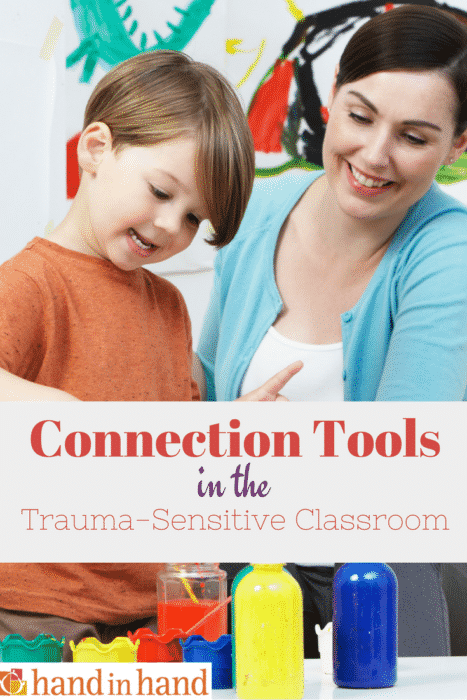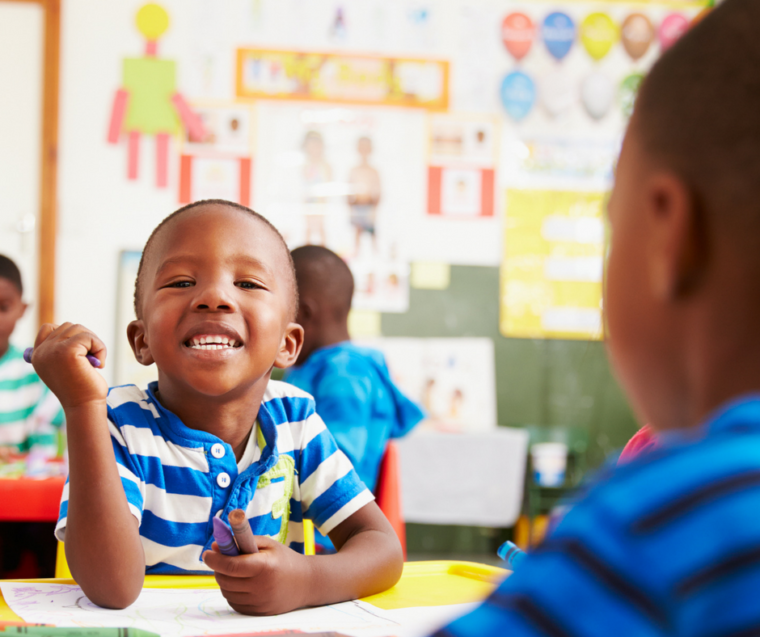 Trauma can really undermine a children's ability to thrive at school, affecting relationships and making it hard for them to follow school structure and directives.
Trauma can really undermine a children's ability to thrive at school, affecting relationships and making it hard for them to follow school structure and directives.
Dealing with these behaviours can be taxing on teaching staff, but young children often turn to caregivers to help them manage their responses to the stress trauma causes, putting teachers in a real position to offer lasting change.
Connection can help refuel the relationship between caregivers and a child that has suffered trauma, in some easy-to-apply ways.
What is Early Childhood Trauma?
Children that go on to experience five or more traumatic events within the first three years of their lives are 76 percent more likely to experience language, emotional or brain developmental delays at school.
According to statistics published by RecognizeTrauma.org, greater exposure to trauma in childhood poses serious health threats later on, from obesity to depression, and children who grow up exposed to trauma are four times more likely to inject drugs and 15 times more likely to commit suicide.
How Trauma Plays Out In Preschool
A trauma-sensitive classroom can give children a safe place to overcome early adversity.
If school bolsters children in four key domains, they maximize a child's opportunity to overcome all kinds of adversity and go on to succeed, says the organization Trauma-sensitive Schools.
Those four domains are:
- Establishing relationships with teachers and peers
- An ability to self-regulate behaviors, emotions, and attention
- Success in academic and non-academic areas
- Physical and emotional health and well-being
Connection can help particularly with relationships, self-regulation, and emotional health and well-being.
How Connection Helps In A Trauma-Sensitive Preschool
Building close, strong connection gives children the focused attention they need for relationships, it helps builds confidence and provides space for a child to work through their feelings. And when children feel connected, they feel lighter, and more able to cooperate.
Bringing connection into the classroom means moving away from punishments and rewards and towards empathy and nurturing. Away from re-direction and towards spending time listening to children as they play or cry. How is this done?

Tools to Fuel Connection
Acknowledging a child and casually interacting when he or she walks into a classroom is a good start to maintaining a long-term classroom of connection. Look to keep making small one-on-one interactions like this through your session. Keep a lookout for children that play alone, and ask them to hang out with you for a week. Watch how their attitude changes.
You can also implement a one-on-one child-led playtime, where you invite a child to play whatever he or she wants for a few minutes. This tool allows a child room to express ideas and, sometimes, voice concerns, through what they choose to play and how they direct you.
The trust and acceptance that forms during these kind of sessions can be transforming. You can read more on how this tool, Special Time, builds a child's self-confidence and helps them offload trauma in Special Time Helps Children Heal Hidden Fears.
Laughter:
Laughter is one of the easiest and most powerful way to bolster connection. Try silly voices, moves or simply calling one toy by another name and introducing it to a child. Hold up a cow for instance and say, “Meet my friend pig.”
Do what works: If you stumble upon laughter, keep going.
Play:
Spending time in play with a group who are not getting on ups closeness and takes down aggression. If you notice children moving off-track, try turning the action on yourself. A game of tag, peekaboo or roleplay where they “get” you helps them work together and puts the children in a powerful role – an experience that children exposed to trauma may need practice at. This kind of play helps foster peer relationships too.
Many Hand in Hand instructors working with children in schools or therapy notice they often choose to play out past experiences. They may put you in jail and force you to eat terrible food, for instance, in a bid to exercise their control and make up for times when they felt lacking. They may use and experiment with language they have heard. This is when you might hear normally forbidden words or play that feels forceful or intense. But if you can go with this play and bring about laughter, you'll offer a great outlet for children to work through fears they are holding inside.
Here's a guide into how a play tool can help create safety and dislodge tension: What is Playlistening?
Why Letting Children Cry Can Help
Expecting crying helps allow and provide for it. Transitions can be prime crying time for some children, especially at arrival, in breaking for play or changing activities. If a child arrives crying invite her to sit with you and offer to wait until she is done. If a child is upset in the playground, see if you can sit together while he expels his feelings. There's some great examples of how this can work in Meet The Preschool Teachers That Listen to Kids
If you find listening to children cry difficult, try instituting a round-robin, where you can rely on other staff members to listen one day, while you do the next. Or create a signal that says you are close to your limit and means you need someone take over. Some teachers use a tool called Listening Partnerships where they exchange time to talk about the triggers they feel when a child cries or acts out, how they feel about children with trauma and other challenging issues. If you'd like to pursue this, get our self-guided course on Listening Partnerships.
When this happens you may be exposed to much that is bothering them in the moment – from how difficult school is to how much your breath stinks and upsets them! But when you can listen to these outbursts without judgment, with empathy and understanding, a shift happens in the child. The act of your listening shows them that school is a place where they can bring their whole selves, no matter the damage or the baggage, and be safe.
For some, class will be a welcome escape they can find nowhere else.
 6 Keys To Bringing Connection into Your Classroom
6 Keys To Bringing Connection into Your Classroom
Enquire about Exposure: If you notice signs of offtrack behavior, aggression, or withdrawal check about a child's possible exposure to trauma.
Pay attention to transitions: Plan for times when connection is disrupted. Arriving at school can present separation issues. Recess or playtime, or even nap-time, if you have one, can leave children reliving abandonment and fear. Search out a students as they arrive, and ask them to join you in the playground if it is a place of anxiety.
Shift your reflexes: Move from redirection to connection. Inviting a child's feeling helps them to work through them. Offer safety by listening empathetically, and saying little.
Don’t Use Your Words: Language engages us in rational thought, shutting down the stem of emotions being expressed from the brain's limbic region. In short: words shut down feelings and healing stops.
Make room: Let children work through their own cries and move on past it themselves if you can allow time, rather than moving them into an activity.
Tag Team Special Time and Listening to Crying: Being available and present is key when you are listening to children, but it can be draining. Teachers can try a schedule where they offer to listen or connect in Special Time on a set day, or every few days.
Find out how about Hand in Hand's Listening Tools in Do You Know These Connection Tools for Trauma Intervention?
Get our guides to using Special Time, Healing Children's Fears and Playlistening with children here, and learn how to help children with challenges calmly and with confidence.
Get Accredited with Hand in Hand
Find out how the Hand in Hand Foundations Course for Educators will transform the work you do with children and their families.